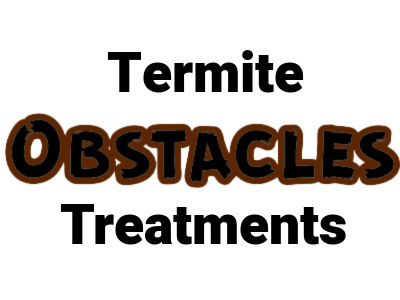Termite Treatment Obstacles
 When it comes to termite control, not every home is a textbook case. Here are some of the common obstacles we run into with different treatment methods:
When it comes to termite control, not every home is a textbook case. Here are some of the common obstacles we run into with different treatment methods:
Fumigation Challenges
- Fragile Roofs: Fumigators need to walk on your roof to set up tarps for tenting. Certain materials—double-stacked clay tiles, lightweight aluminum tiles, some steel roofs, and traditional clay tiles—are especially prone to breakage, even when extreme care is taken.
- Connected Homes: Townhomes, row homes, and condos can’t be fumigated individually. If one unit has an infestation, the entire connected structure must be tented, which means getting all neighbors on board.
- Vines: Mature vines clinging to the side of a house will likely be damaged or destroyed during fumigation. There’s just no way around it.
Heat Treatment Challenges
- Sprinkler Systems: Homes with fire sprinkler systems can’t be heat treated in the attic unless the system is drained beforehand. That process is not only expensive, but it’s also hard to find a company willing to do it.
- Sensitive Tubing: Some homes have plastic tubing running through the attic for drinking water systems or central vacuums. That tubing can be damaged by high heat, making treatment risky.
Borate Treatment Limitations
- No Attic or Exposed Wood: In some homes, there’s no attic access, no usable attic space, and no exposed wood inside. Borates can’t be applied without exposed surfaces—unless walls are already opened up during a remodel, there’s no practical way to treat.
- Stored Belongings: Over time, people tend to accumulate a lot of belongings, often stashing them away in attics and garages where they’re eventually forgotten. Navigating an empty attic is already difficult—add years of stored items, and it can become nearly impossible. Just because something has been sitting in an attic for ten years doesn’t mean the owner wants it sprayed with chemicals. Applying borate treatments in cluttered spaces can be a challenge, especially when trying to avoid hitting old toasters, DVD players, or other forgotten items.
Local Treatment Limitations
- Covered Eaves and Hidden Wood: Stuccoed eaves and fully finished interiors mean there’s often no visible wood to treat. In homes with no attic, no crawl space, a finished garage, and everything hidden behind stucco and drywall, you have to wonder how termites found anything to infest in the first place. If these homes experience a drywood termite swarm, full fumigation is often the only viable solution.
- Inaccessible areas: Framing inside of walls or in areas that can be seen but not reached, like around chimney tubes or the far end of attics.
Full Structure Termite Warranties
- Limited Access, Limited Value: For homes with no accessible attic, crawl space, or exposed wood, there’s often nothing to inspect or treat—so maintaining a full structure warranty for drywood termites after the initial one expires might not offer any real value.
- Subterranean Termites: It can be a similar story. Soil treatments use termiticides that stay effective for up to eight years (according to the manufacturer). So renewing a full structure warranty after the original expires may not be necessary.
As you can probably tell, termite control isn’t one-size-fits-all. Every home is different, and the right solution depends on a long list of variables. Some companies try to fit every home into the same category—but that approach doesn’t always work. It’s worth understanding the details, because why pay for something that won’t be effective or doesn’t apply to your home?
John Gelhard
Owner/Operator of California Termite, Operator License No. 14720.
